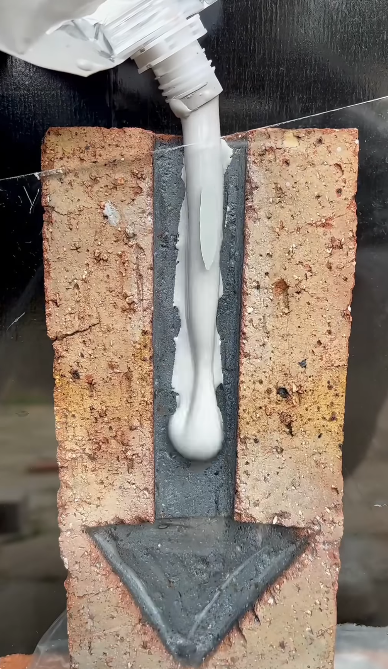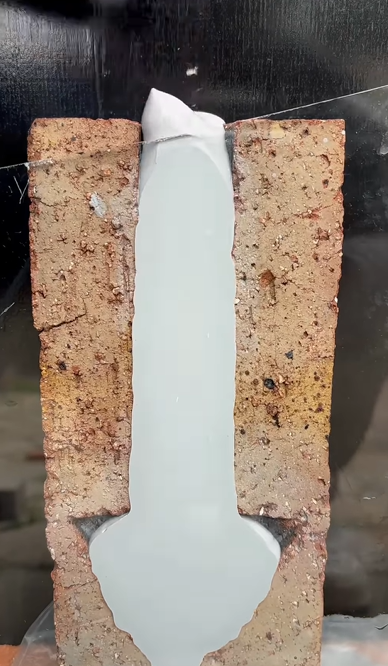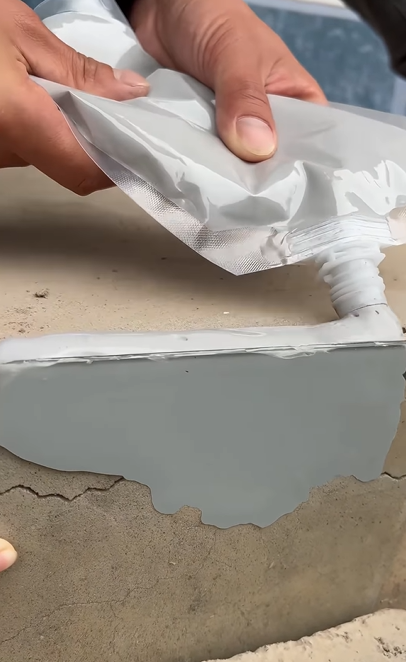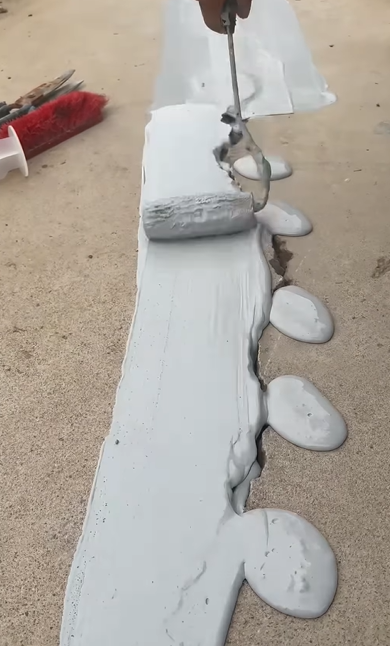In the first step, the self-leveling compound is carefully poured onto the surface.
The white liquid begins to flow and fill the space between the bricks, filling the uneven gaps.
This process ensures that the flooring is smooth and level before proceeding with further work.
Spreading the Compound Across the Surface

In this step, the self-leveling compound continues to spread across the surface, ensuring even coverage.
It flows naturally, filling in any cracks and creating a uniform layer.
The consistency and fluidity of the compound make it ideal for achieving a smooth, level surface.
Applying the Compound on a Crack
Next, the compound is used to fill in cracks and gaps in the surface, such as on a concrete floor.

This step is crucial for ensuring that the surface is fully sealed and that the leveling compound adheres well, creating a stable foundation for any flooring to be applied later.
Smoothing the Compound
Using a roller, the self-leveling compound is spread evenly across the surface.

This smoothing process ensures that the compound covers all the necessary areas, creating a uniform layer.
The roller helps to spread the compound into all corners and edges, achieving a consistent texture throughout the surface.

The process of applying and smoothening a self-leveling compound involves careful pouring, spreading, and smoothing to ensure a flawless, even surface.
These steps are essential for preparing the foundation before installing the final flooring, creating a perfect base for tiles, vinyl, or other flooring materials.
